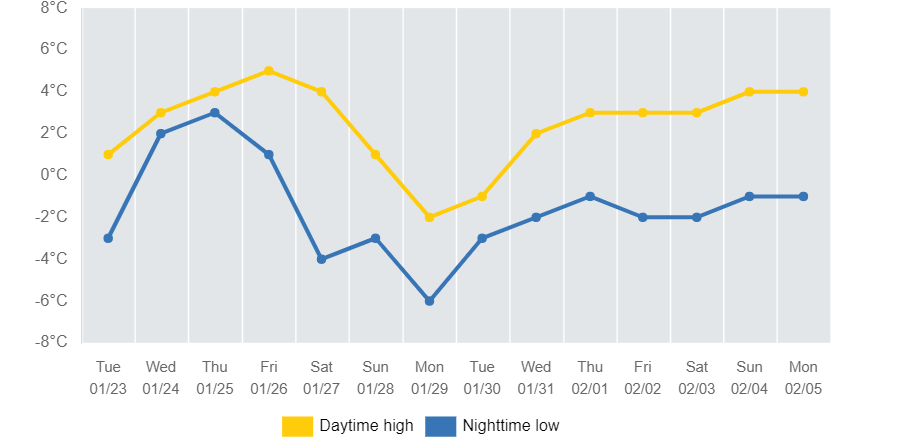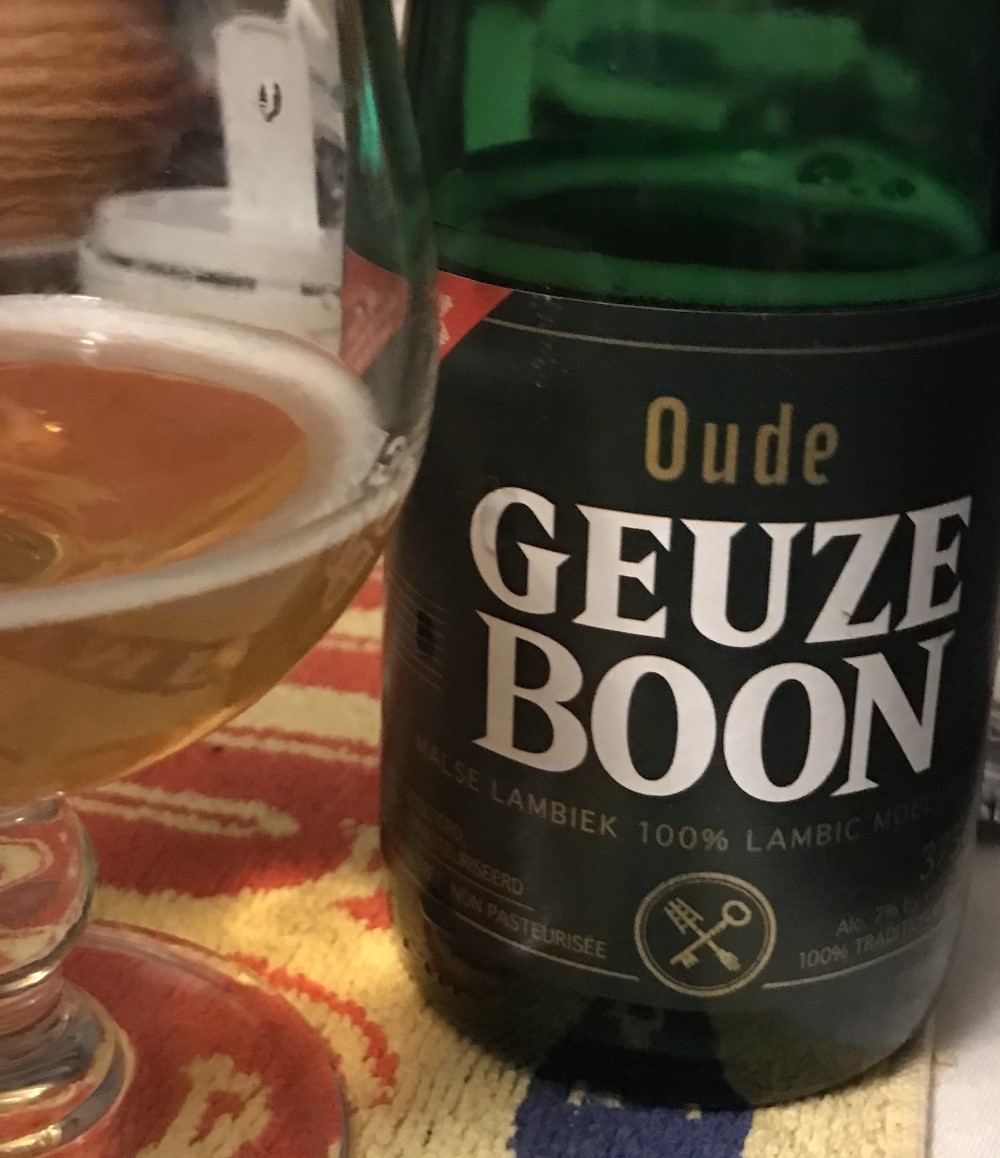 We are hitting the ground running this week. The image of the week up there is from Liam who posted a few shots on #BeerSky of his latest find, a “grubby 1920s silver-plated pint tankard” from Clery’s Restaurant in Dublin. I think it is all very charming. Careful readers will recall my own foray into such matters with a mid-1800s pewter quart pot I picked up in 2012. Just the thing for a very large measure of Porter.
We are hitting the ground running this week. The image of the week up there is from Liam who posted a few shots on #BeerSky of his latest find, a “grubby 1920s silver-plated pint tankard” from Clery’s Restaurant in Dublin. I think it is all very charming. Careful readers will recall my own foray into such matters with a mid-1800s pewter quart pot I picked up in 2012. Just the thing for a very large measure of Porter.
And there was again a lot about beer writing this week. Not sure if that is good or bad. Stan beat me to one particular thought on Monday. A few years back I complained to him in an email that so much beer writing was repetative, timid and sort of dull and he gave me the best advice which he has repeated in his post this week – you’ve been around too long, seen too much… or something like that:
I would add this thought. What is new to me or Evan Rail or Jeff Alworth or Alan McLeod might be different than what is new to somebody finally getting around to visiting a new brewery because one opened in their neighborhood… There are many opportunities to write something new, for both the beer experienced and the beer inexperienced audiences.
 Gary writes on a similar note. Yet having heard that and agreeing to a point, I am also mindful of the tweet David Jesudason posted about his current situation. You will remember that he is the current holder of The Michael Jackson Award for Beer Writer of the Year from BGBW. But, if you click on that thumbnail, you will see he says:
Gary writes on a similar note. Yet having heard that and agreeing to a point, I am also mindful of the tweet David Jesudason posted about his current situation. You will remember that he is the current holder of The Michael Jackson Award for Beer Writer of the Year from BGBW. But, if you click on that thumbnail, you will see he says:
I am currently in a position where I am not sure I can continue this type of work.
Because while there may be “many opportunities to write something new, for both the beer experienced and the beer inexperienced audiences,” I would submit, there is little to no support for many types of normal business reporting and investigative reporting that we see in other areas of lifestyle writing. And why is that? Does it leads to things like this? A story about one British brewer with a claim:
Speaking about the expansion, Vault City’s co-founder Steven Smith-Hay said: “Our ambition is to be the biggest dedicated sour beer producer in the world. This new site will be instrumental in achieving that.*
The headling added certainty by way of the “to be” rather than “may become” sort of grammarical structure. And, yes, the author does not write the headling but it all led to the statement “I’ve got a lot to say about that Vault City interview but tough cheese I’m on holiday” as well as the statement “was from a press release anyho” with questions about the reality of that ambition. To be or not to be. But only on social media. Will there be follow up? Will track records be tracked? Is it that we don’t really care and it’s all puffery for… well, you know.
It also may be related to the opinion piece “Hazy IPA Conspiracy Theories” from Andy Crouch. He who upset my world by this article – by leaving me more in agreement with the very Mr. B who Andy sought to criticize. As reported last week, Mr. B pointed at Hazy IPAs as either the cause or at least a key symptom of US craft’s sputtering retraction. Why? Well, in addition to simmering tone of “one does not question craft”, Andy also surprisingly uses that hallmark of a weak argument: poorly dolled out snark. Phrases deployed included “grumpy old craft beer cowboys” and “strawman” and “laugh out loud moment” and especially “55 year old dudes grumbling” as, you know, Mr. B is older than that. Setting such faux juveneilia aside, what he really misses is this:
The popularity of consumer products, including beer, wine, and spirits, ebbs and flows over time. In just the past decade, we’ve seen the rise and fall of cocktails, cider, hard seltzers, and many others. Each will continue to play some role in the drinking landscape but no drink has a right to the public’s attention. Craft beer has many issues but chief among them is a generational disconnect. The audience for craft beer continues to age, younger folks make fun of craft beer dads and their beer samplers on TikTok, and the industry stands in a corner publicly wishcasting for the return of “beer-flavored beer.”
What Andy does not seem to want to admit is that it’s not about the rise and fall of each particular form of drink but a greater overall trend. These sugar bomb beers that are labeled as Hazy IPA are nothing more than the beery sibling to RTDs, coolers and hard seltzers. Interchangible. Forgettable. Cavity causing. They may sell but they are part of that continuum that speaks to a candy fixated palate. Kinderbier. Easy to make and easy to sell with the right cartoony can wrapper. In fact, their rise was perfectly culturally appropriate for the troubled times, a perfect drink for an era of crisis that started with the shock of Trump getting elected and then continued on through the daze of life in the pandemic. They are booze for unsettled people who have bigger things to deal with, those who don’t want to think about it. Any of it. The “eating a box of ice cream sandwiches stnading by my fridge because I can” of beers for folk who no longer can muster the energy to give a shit. What sort of industry bases its long term health on that sort of consumer? By all appearances, this shrinking one called craft.
Speaking on asking why things are the way they are, Steve Dunkey wrote a bit of a exposé of the Good Beer Guide that was publishing in What’sBrewing, describing some of the politics behind the scenes including this bit of a revelation:
There isn’t enough room in the printed book for every pub that could meet new nationalised selection criteria. Each branch has an allocation that it can fill, and it’s well known that the allocation will be filled regardless of the quality of the pubs, because it’s believed at a branch level that if it doesn’t fill its allocation, it might not have as many entries the following year. This would restrict it if it then did have the great pubs to fill the quota.
That is quite the thing. I had no idea that there was no centralized editing of submissions from the regions. The story raises other questions, too. Check it out.
Stan (for the double) has all the questions and this week shared another Hop Queries where he pointed out again another few trends trend that point to continued retraction:
Hop Products Australia harvested 26 percent fewer metric tons of hops in 2024 than in 2023. Much of that was intentional, taking into consideration that the worldwide supply of aroma hops is greater than demand. Production of Galaxy, which is 65 percent of what HPA sells, was down 20 percent to 879 metric tons. Vic Secret dipped 22 percent and Eclipse 57 percent…. A report from Germany suggests acreage has not been reduced to the extent it has been in the United States. When the numbers are toted up, Perle and Hallertau Tradition will likely decline the most, while high alpha acreage will likely increase slightly.
And apparently the days of food and beer pairing are well behind us. As Jeff noted from a recent newsletter reporting from a conference speech by a commercial investment banker – it’s now all about “the mood management” business! As a banker might, the points being made included a grind that sounds a lot like someone worried about their ROI:
-
-
- If consumer are walking away from beer, Nik asks that you explain Modelo, Pacifico, Michelob Ultra, Voodoo Ranger, Busch Light, and Coors Banquet to him, which are all performing great.
- We’re not in the beverage business, we’re in the “mood management business” per Nik. He says we drink 8 beverages a day and that alcoholic ones are competing with non-alcoholic ones.
- “There’s no such hing as lazy markets, only lazy marketers”
- Prices have been going up lately. Are we doing enough to reinforce that value we provide to command the new, more premium price? (He implies no)…
-
Mmm… mood management. That’s a lot of “out-Barting” even BA Bart (as recently seen as a few weeks ago) for pushy positivity in a retracting market but RBC (actually my own bank, with those very unAmerican two out of three letters) and its investment bankers have needs. The problem with beer is you, you and you… especially you… are LAZY!!! I know I am. And, yes, so does my bank.
Next up, Millie Bowles writing for Kent Online shared the tale of neighbours fed up with the smells off the neighbouring property, the contract brewers South East Bottling:
Fed-up neighbours say the stench from a brewery is so bad they cannot sit in their gardens – but bosses are urging residents to be more “pro-business”. People living near South East Bottling (SEB) on Northdown Industrial Estate in Broadstairs have complained of a “yeasty, sickly” smell which can even force them to keep their windows shut. Such is the pong, Thanet District Council has now ordered the company to carry out an odour assessment. SEB, which works with brands such as Old Dairy and Tiny Rebel, says it is “unfortunate that in current times, local residents and the council choose to operate in an anti-business manner”.
Stench! Pong!! We read that Marion Langelier, 82, is stopped from going out in the garden because of the smell as well as “noise issues, notably “banging and crashing’ bins.” Giving equal time, we also read that Chris Prentice, 49, says it is “like hot Weetabix. It’s quite comforting. It’s nice.” Hot Weetabix? How spicy! But the real question is this – why do UK newspapers include people ages? Otherwise, solid business reporting.
Not quite as smelly apparently but still irritating is Albania where NHS Martin unpacked** some of the trials and tribulations one can meet when traveling there:
… we sprinted to Berat’s bus station where the bus driver checked 3 times we really wanted to go to Lushnje. “Can we go to the Station please” we asked as the bus pulled up in an unprepossessing centre, the Mansfield of the Balkans, but the driver just pointed vaguely to the west. If in doubt, follow the tractor. Well, there’s a building called “STATION” anyway; five minutes to spare for the 10:38. No bus stops, no timetable, no-one to ask, just (bizarrely) two cafes side-by-side. Resigned to missing (if it had ever run) the 10:38, we resolved to seek advice from the cafes. It’s what you’d do in England, isn’t it, ask in a pub. The chap in one pointed heavenwards, the lady who brought us two espressos borrowed Mrs RM’s phone to point at a roundabout a half mile south, though a bus driver taking a fag break added “autostrada” mysteriously…
There is more. I think they ending up catching the 1:38 pm bus. Me, when I worked in Poland in 1991 I tried Albanian carrot jam. Cured me of making further travel inquiries.
As a follow up on the receive spate of breweries going under, Ed wrote an interesting post on his pre-brewing life as a microbiologist with a firm that went into receivership:
When I worked as a microbiologist the company I was at went bankrupt and managed to re-open a soon after with a slightly different name doing the same business. It had been obvious the company was not doing well for some time. A big customer had been lost so the work just wasn’t there like it once was. When I saw the owners daughter updating her CV on a work computer I thought the company was definitely going under, but despite this it still came as a shock when it finally happened. I’d worked there for years so though intellectually I’d guessed I’d soon be on the sausage it hadn’t prepared me emotionally for when reality hit.
Finally and perhaps along the same line… in my undergrad years over 40 years ago, one entertaining pal would discuss hypothetical washroom fixtures he wanted to see. He dubbed one the VomKing 5000? Apparently they exist for real in Germany according to one posting on the Dull Men’s Club on Facebook. Note: this is a free standing barf station in a public washroom there. Handles and all. I think it only lacks the mist of ice cold water spraying your forehead that my pal had designed into his porcelain dream. His grip handles may also have been refrigerated in his version. But here you can head butt the flush button in this model. Reminder: the internet was made for educational purposes. You have been educated.
dubbed one the VomKing 5000? Apparently they exist for real in Germany according to one posting on the Dull Men’s Club on Facebook. Note: this is a free standing barf station in a public washroom there. Handles and all. I think it only lacks the mist of ice cold water spraying your forehead that my pal had designed into his porcelain dream. His grip handles may also have been refrigerated in his version. But here you can head butt the flush button in this model. Reminder: the internet was made for educational purposes. You have been educated.
And with that great moment in blogging history… from Alpha to Omega… input to output…so… once again… that is it and we roll the credits… well, the credits, the stats the recommends and the footnotes and the many ways to find good reading about beer and similar stuff via any number of social media and other forms of comms connections.*** Want to keep up with the news before next Thursday? Check out Boak and Bailey every Saturday and Stan back each Monday. Elsewhere go look at then listen to Lew’s podcast. And get your emailed issue of Episodes of my Pub Life by this year’s model citizen David Jesudason on the odd Fridays. And Phil Mellows is at the BritishBeerBreaks. Once a month, Will Hawkes issues his London Beer City newsletter and do sign up for Katie’s now revitalised and wonderful newsletter, The Gulp, too. Ben’s Beer and Badword is back with all the sweary Mary he can think of! And check out the Atlantic Canada Beer Blog‘s weekly roundup. There is new reading at The Glass which is going back to being a blog in this weeks best medium as message news. Any more? Yes! Check to see the highly recommended Beer Ladies Podcast. That’s quite good. And the BOAS podcast for the bro-ly. And the long standing Beervana podcast …except they have now stood down. Plus We Are Beer People. The Boys Are From Märzen podcast appears suspended as does BeerEdge, too. But not Ontario’s own A Quick Beer. There is more from DaftAboutCraft‘s podcast, too. All About Beer has introduced a few podcasts… but some may be losing steam. And there’s also The Perfect Pour. Plus follow the venerable Full Pint podcast. And the Craft Beer Channel on Youtube. The Moon Under Water… is gone which is not surprising as the ask was $10 a month. Pete Brown’s costs a fifth of that but is writing for 47 readers over there. There was also the Beer O’clock Show but that was gone after a ten year run but returned renewed and here is the link! Errr… nope, it is gone again.
*I couldn’t gather the energy to keep up with the Vault City thing further – but Stonch made a great point.
**Travel pun!!
***This week’s update on my own emotional rankings? Facebook still in first (given especially as it is focused on my 300 closest friends and family) then we have BlueSky (128) rising up to maybe… probably… likely pass Mastodon (913) in value… then the seemingly doomed trashy Twex (4,474) hovering somewhere above or around my largely ignored Instagram (163), with sorta unexpectly crap Threads (43) and not at all unexpectedly bad Substack Notes (1) really dragging up the rear – and that deservedly dormant Patreon presence of mine just sitting there.

















